The race war that wasn’t Patrik Mathews wanted bloodshed in pursuit of his hateful agenda, instead, he got the orange jumpsuit of a convicted felon
Read this article for free:
or
Already have an account? Log in here »
To continue reading, please subscribe:
Monthly Digital Subscription
$0 for the first 4 weeks*
- Enjoy unlimited reading on winnipegfreepress.com
- Read the E-Edition, our digital replica newspaper
- Access News Break, our award-winning app
- Play interactive puzzles
*No charge for 4 weeks then price increases to the regular rate of $19.00 plus GST every four weeks. Offer available to new and qualified returning subscribers only. Cancel any time.
Monthly Digital Subscription
$4.75/week*
- Enjoy unlimited reading on winnipegfreepress.com
- Read the E-Edition, our digital replica newspaper
- Access News Break, our award-winning app
- Play interactive puzzles
*Billed as $19 plus GST every four weeks. Cancel any time.
To continue reading, please subscribe:
Add Free Press access to your Brandon Sun subscription for only an additional
$1 for the first 4 weeks*
*Your next subscription payment will increase by $1.00 and you will be charged $16.99 plus GST for four weeks. After four weeks, your payment will increase to $23.99 plus GST every four weeks.
Read unlimited articles for free today:
or
Already have an account? Log in here »
Hey there, time traveller!
This article was published 18/06/2021 (1634 days ago), so information in it may no longer be current.
GREENBELT, MARYLAND — The guilty plea was recorded, the agreed statement of facts read into the record, and Patrik Jordan Mathews — dressed in an orange prison jumpsuit — shuffled out of a federal courtroom on June 10 towards a bleak future behind bars.
He had a different destination in mind a year-and-a-half earlier — a destination that would have been soaked in bloodshed in the service of his fascist, white-supremacist ideals.
That destination was three hours south from the courthouse, in Richmond, Va., the former home of the Confederacy.
● ● ●
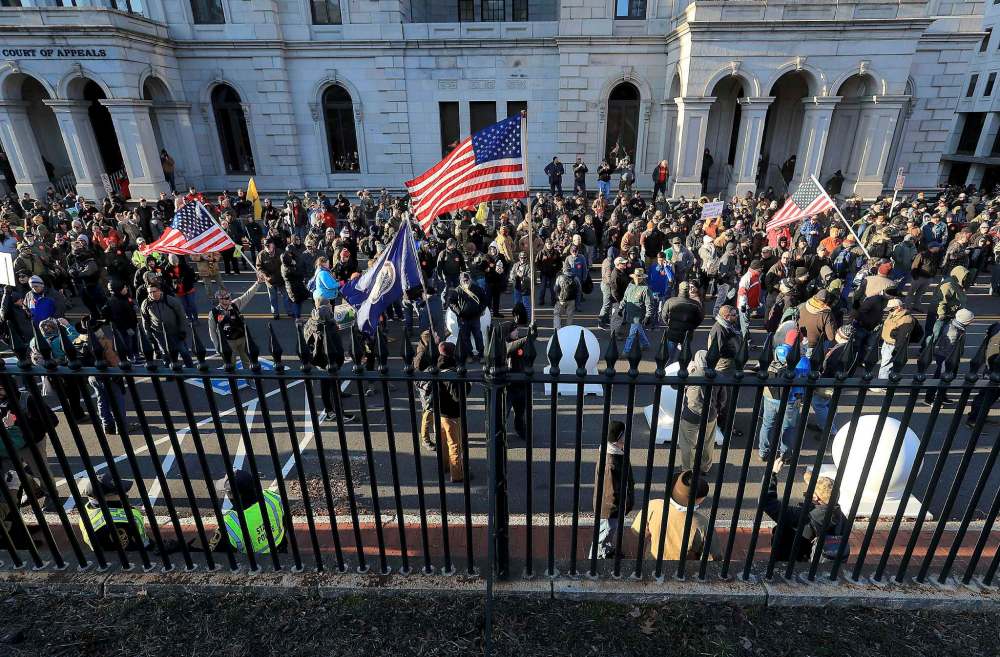
People were everywhere.
Twenty-two thousand in total — 6,000 on the grounds of the Virginia State Capitol itself, and 16,000 in the surrounding streets of Richmond, with its sloped and slanted sidewalks and its old buildings seemingly cut straight out of history.
Church bells from one of the area’s many churches could be heard clanging throughout the warm and breezy morning, but the people in attendance were in no mood for pious prayer.
They were angry.
Some were awakened as early as 2 a.m. to drive to the capital from other parts of Virginia, and others yet had set off even earlier, travelling from distant areas of the southeastern United States to descend upon the city.
It was Jan. 20, 2020 — a day known as Lobby Day in Virginia — an annual event where lobbyists meet with lawmakers at the state capitol to pitch their agendas.
But on this particular Lobby Day, the Democratic party had control of the statehouse for the first time in 26 years, and they were using their newly found majority to push through a slate of stricter gun control measures, including universal background checks.
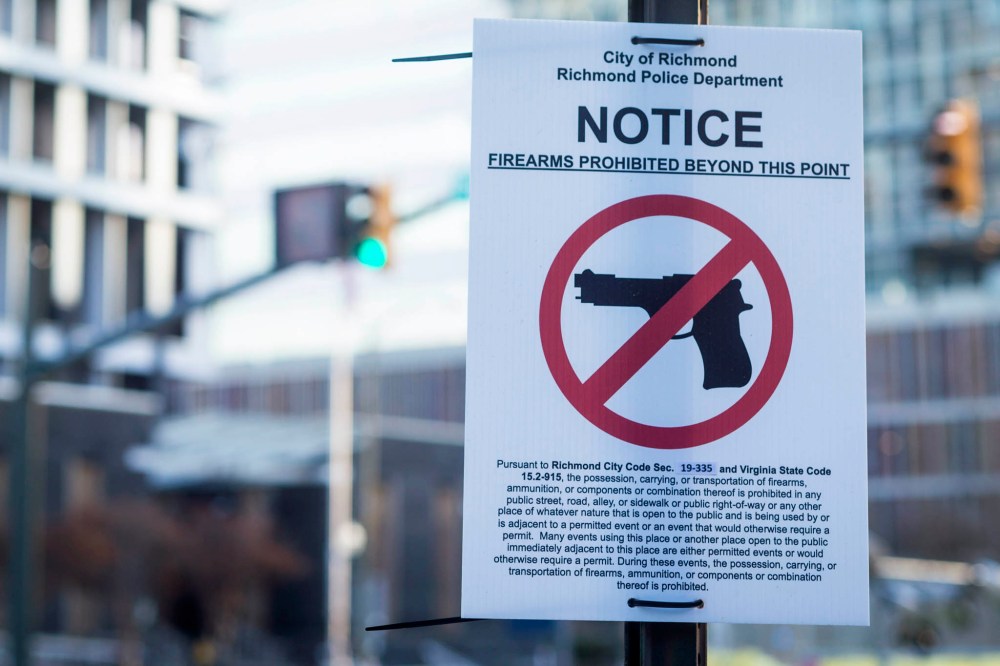
Just one year prior, the state had been rocked by a mass shooting when a disgruntled municipal employee in Virginia Beach shot 12 people dead and injured four others, before being killed by police.
In response to the proposed bills, the Virginia Citizens Defence League — a pro-gun rights group that’s been described as being to the political right of the National Rifle Association — announced plans for a demonstration.
And on Jan. 15 — less than a week before the rally — Gov. Ralph Northam, a Democrat, declared a state of emergency in Richmond. Citing police intelligence, he said there were threats of violence, and that he didn’t want a repeat of the fatal 2017 Unite the Right rally in Charlottesville.
As a result, no one would be allowed to carry guns on the capitol grounds — a move that further enraged pro-Second Amendment activists.
“We have received credible intelligence from our law enforcement agencies that there are groups with malicious plans for the rally. This includes out-of-state militia groups and hate groups planning to travel from across the country,” Northam said at a press conference.
“They are not coming to peacefully protest. They are coming to intimidate and to cause harm. State intelligence analysts have identified threats and violent rhetoric similar to what has been seen with other major events, such as Charlottesville.”
That morning, a sea of people stood on the capitol grounds: they packed in shoulder-to-shoulder on the neatly manicured lawn cut through with brick pathways and studded with monuments. The trees rose high above them, blocking out the sun with their expansive, leafy canopies.
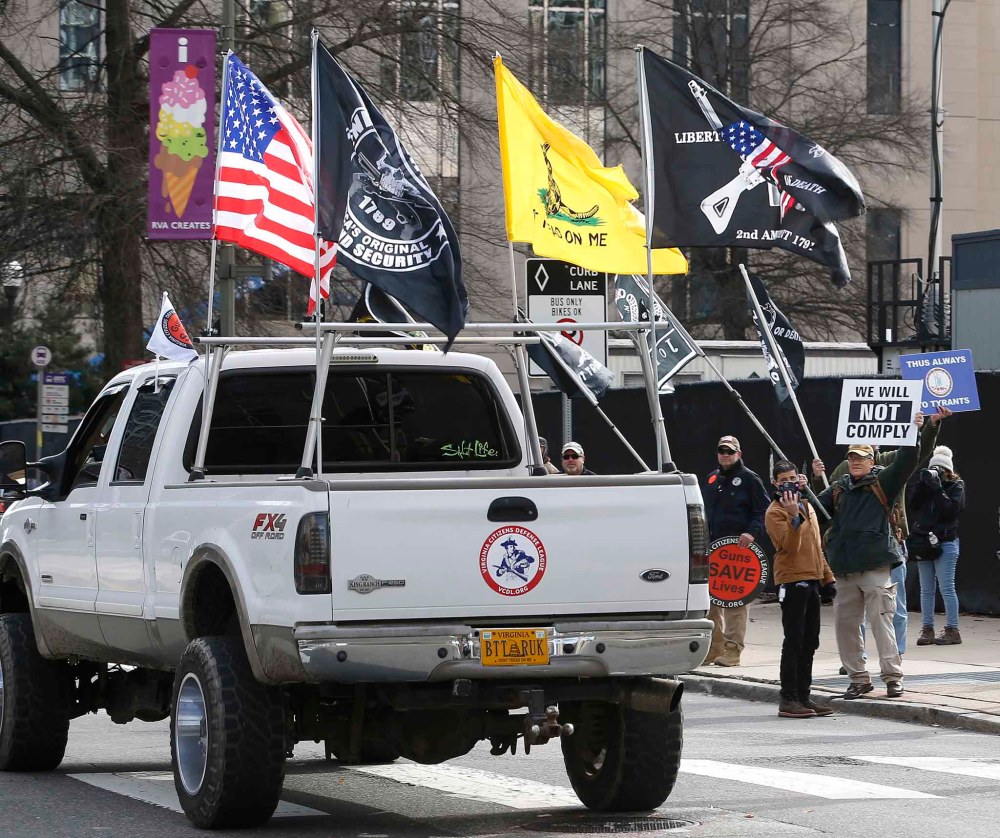
Temporary fencing was erected and protesters had to pass through metal detectors. On the roofs of buildings in the Capitol District, police officers were stationed with guns.
Outside the capitol grounds, protesters dressed in tactical gear carried military-style rifles through the streets. American flags were waved and chants of “USA! USA! USA!” filled the air. One placard held aloft read: “The American Revolution began for less.” Another placard warned of civil war.
Gun rights icon Stephen Willeford — a former NRA firearms instructor who helped stop a 2017 mass murder at a Baptist church in Texas by firing upon and injuring the perpetrator — spoke to the defiant crowd with a raised fist.
Alex Jones, the conspiracy theorist and huckster host of the radio program Infowars, drove through the streets in an armoured vehicle, shouting into a bullhorn with his distinctive, gravelly voice.
But among the thousands of protesters at the rally, two people were absent: Patrik Mathews and Brian Lemley Jr. They were members of a violent neo-Nazi group called The Base, and both had military backgrounds: Mathews in the Canadian Army Reserves and Lemley in the U.S. Army.
Mathews had been on-the-run ever since illegally entering the U.S. in the fall of 2019, shortly after the RCMP raided his home in Beausejour in the aftermath of his exposure as an active Canadian military member moonlighting as a neo-Nazi recruiter.
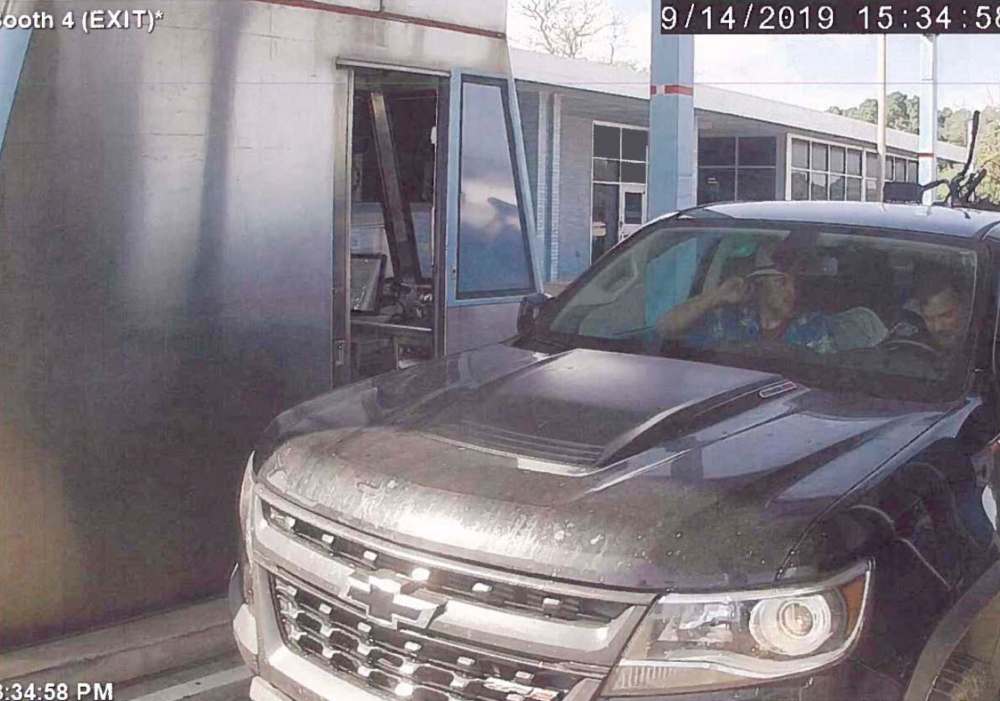
Lemley — alongside another American neo-Nazi — then drove more than 950 kilometres from Maryland to Michigan to pick Mathews up and help provide him safe harbour, eventually transporting him to a paramilitary training camp in Georgia. Later, the two men would live together at an apartment in Delaware.
If they’d had their way — if their plans had gone off without a hitch — they would have been in Richmond that morning.
And that’s because — according to the Federal Bureau of Investigation; the Bureau of Alcohol, Tobacco, Firearms and Explosives; and the U.S. Attorney’s Office in Maryland — they wanted the rally to serve as a spark that would ignite a violent revolution for the white race.
They wanted blood.
● ● ●

The statue is located in the middle of a small, idyllic park in a small, idyllic city, about an hour’s drive west from the state capital down Interstate 64, which cuts through the lush forests and rolling hills of Virginia.
The park is treelined and scattered with bushes, and from the right angle, the statue — some 30 feet high in the air — is backdropped by the steeple of a nearby Methodist church. It has stood in that spot for 97 years.
Atop the statue — which is cast in bronze — is a famous horse known as Traveller, and atop that horse is Gen. Robert E. Lee, the military leader of the Confederate States Army during the American Civil War.
In his right hand is his hat, hanging down by his side, and his left hand grips the reins of his trusted horse, which is frozen in mid-step. Lee stares forward, his gaze fixed in the distance.
Until 2017, the park — located in the city of Charlottesville — was known as Lee Park, but in June of that year, it was changed to Emancipation Park. Later, the name was changed again, and it currently goes by Market Street Park.
But Charlottesville City Council wasn’t content to just change the name.
They also wanted Lee gone.
In the aftermath of the 2015 Charleston, S.C., church shooting — which saw 21-year-old white supremacist Dylann Roof gun down nine Black parishioners during a Bible study — the movement to remove Confederate monuments from public spaces in the U.S. picked up steam.
Critics of the monuments say they have little — or nothing — to do with honouring fallen soldiers and military leaders; instead, they argue the statues were erected in the Jim Crow South to re-assert white supremacy and intimidate Black people.
Jim Crow is the term used to refer to a series of state and local laws in the South that enforced racial segregation and relegated Black Americans to second-class citizens — lasting from the 1870s till the passing of the Civil Rights Act of 1964 and the Voting Rights Act of 1965.
By 2016, the movement to tear down Confederate monuments had arrived in Charlottesville.
“(I have) spoken with several different people who have said they have refused to step foot in that park because of what that statue and the name of the park represents. And we can’t have that in the city of Charlottesville,” Vice-Mayor Wes Bellamy said in March 2016.
On Feb. 6, 2017, the five-person city council voted three-to-two in favour of removing the Lee monument. The move was controversial, sparking a lawsuit from the Sons of Confederate Veterans, a group of male blood-descendants of the rebel soldiers.
Soon enough, white supremacists, Klansmen, fascists and neo-Nazis started turning up.
On May 13, Richard Spencer — one of America’s most notorious neo-Nazis — led a torch-lit rally at the park to protest the statue’s proposed removal, as protesters chanted the anti-Semitic slogan: “Jews will not replace us!”

On July 8, roughly 50 members of the Ku Klux Klan arrived in Charlottesville, donning their traditional hooded, white robes and carrying Confederate flags. They were outnumbered by hundreds of counter-protesters, and all told, police made 23 arrests.
And then in the fall, the Unite the Right rally came to town, organized — in part — by local resident Jason Kessler, with the help of Spencer and other crackpots and bigots.
The story of the rally is well-known: Clashes between fascist and anti-fascist protestors filled the two-day event. White supremacist luminaries such as Spencer and David Duke spewed hatred to their followers. Confederate and Nazi flags were openly marched through the streets.
And at 1:45 p.m. on the second day — shortly after then-Virginia Governor Terry McAuliffe belatedly declared a state of emergency — James Alex Fields Jr., a 22-year-old neo-Nazi from Kentucky, deliberately rammed his car into a crowd of people.
The result: 32-year-old Heather Heyer — a paralegal and part-time waitress who felt compelled to confront fascists marching in her hometown — lay dead on the streets of Charlottesville.
All told, there were three deaths, 33 injuries and 11 arrests.
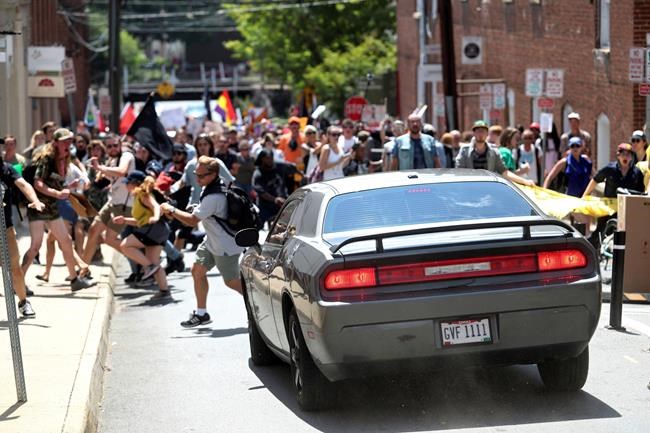
The rally in Richmond 29 months later ended differently — no injuries and just one arrest. And while it is impossible to argue a counter-factual, the different outcomes might be explained by the different approaches police and politicians took towards the events.
In Charlottesville, hands-off; in Richmond, proactive.
During the Jan. 15, 2020 press conference where he announced the temporary state of emergency, Governor Ralph Northam explicitly acknowledged the lessons learned from the earlier tragedy.
“No one wants another incident like the one we saw in Charlottesville in 2017. We will not allow that mayhem and violence to happen here,” Northam said.
But the Lee statue in Charlottesville is far from the only confederate monument — and potential flashpoint for far-right violence — in the state.
During the Civil War, Richmond served as the capital of the Confederacy. It was difficult to defend due to its location at the end of a long supply line and was frequently the target of Union attacks. It was also the site of a major slave market, where human beings were bought and sold.
In the summer of 1862, Union General George McClellan crossed the Potomac River with 120,000 men and marched on Richmond. Despite commanding an army of roughly half that size, Lee turned back the advancing force, driving them down the Virginia Peninsula to the point of near destruction.
The military exploits of Confederate generals such as Lee and Stonewall Jackson served as a cornerstone of the Lost Cause Myth in the aftermath of the war. Another cornerstone was the collection of monuments erected in their honour across the country.
The Lost Cause Myth is the (false) belief that the goals of the Confederacy were heroic, and that slavery and white supremacy did not play a central role in the cause of the South. By proponents of the myth, the conflict is re-cast as the “War of Northern Aggression.”
The myth is built upon well-established lies and is contradicted by public statements from leading rebels at the time of secession.
On March 21, 1861, Alexander Stephens, vice-president of the Confederacy, said the rebel state was founded upon “the great truth that the negro is not equal to the white man.”
“The new constitution has put at rest, forever, all the agitating questions relating to our peculiar institution, African slavery, as it exists among us the proper status of the negro in our form of civilization,” Stephens said.
“This was the immediate cause of the late rupture and present revolution.”

As the writer Clint Smith — who recently wrote a book on the legacy of chattel slavery in the U.S. — put it: “For so many of them, history isn’t the story of what actually happened; it is just the story they want to believe.”
On the grounds of the Virginia State Capitol — where Patrik Mathews and Brian Lemley Jr. are accused of plotting a racist terror attack — there stands three Confederate monuments.
The first is William Smith, the former governor of Virginia and a general in the Confederate States Army, which bears the inscription: “When the storm of war was burst his voice was in his sword.”
The second is Stonewall Jackson, who was Lee’s right-hand man during the Civil War and is widely considered one of the greatest military tacticians in U.S. history.
Jackson was also a slave owner, who — according to historian James Robertson — believed God had “sanctioned slavery.” He was personally present at the hanging of radical abolitionist John Brown, who symbolically fired the first shot of the war with his raid on Harpers Ferry in Virginia.
The third is Dr. Hunter Holmes McGuire, a pro-slavery advocate and surgeon who served in Lee’s Army of Northern Virginia.
As for Lee himself, in addition to being a remarkable military mind, he was also a slave owner, who once wrote to his wife that he believed slavery a “greater evil to the white man than to the black race” — a reflection of the paternalistic, custodial view many whites used to justify slavery.
“For so many of them, history isn’t the story of what actually happened; it is just the story they want to believe.” – Writer Clint Smith
These monuments do indeed tell a story — just not the story their creators’ intended.
You can learn a lot about a people by what they choose to honour.
And what the people of Virginia chose to honour on the grounds of their state capitol are traitors who tore the country apart in a bloody civil war aimed at keeping millions of human beings in chains.
“This week it’s Robert E. Lee. I noticed that Stonewall Jackson’s coming down. I wonder, is it George Washington next? And is it Thomas Jefferson the week after?” President Donald Trump said, just days after the Unite the Right rally.
When the fascists came to Charlottesville, they were protesting the symbolic dismantling of white supremacy in the U.S. It was as if they could feel the power and privilege of their ancestors slipping through their fingers, fuelling the fire of their politics of racial resentment.
It is hard to enter the mindset of a white person in America today — or Canada, for that matter — who feels themselves so aggrieved and oppressed, who is so scared of the racial ‘other’ they’ve concocted in their head, the only solution seems to be to pick up guns.
“Thus people haunted by the purposelessness of their lives try to find a new content not only by dedicating themselves to a holy cause but also by nursing a fanatical grievance.” – Eric Hoffer in The True Believer
But that was the mindset of Patrik Mathews and Brian Lemley Jr. as they plotted to drive to Richmond and open fire on the crowd. Court records suggest they also discussed the possibility of finding an isolated police officer to execute, so they could steal his weapons and uniform.
“The system has prevented a peaceful solution at every possible turn. It is the system that is fomenting violent revolution — not us — and they shall now reap what they have sown,” Mathews said in a self-recorded propaganda video.
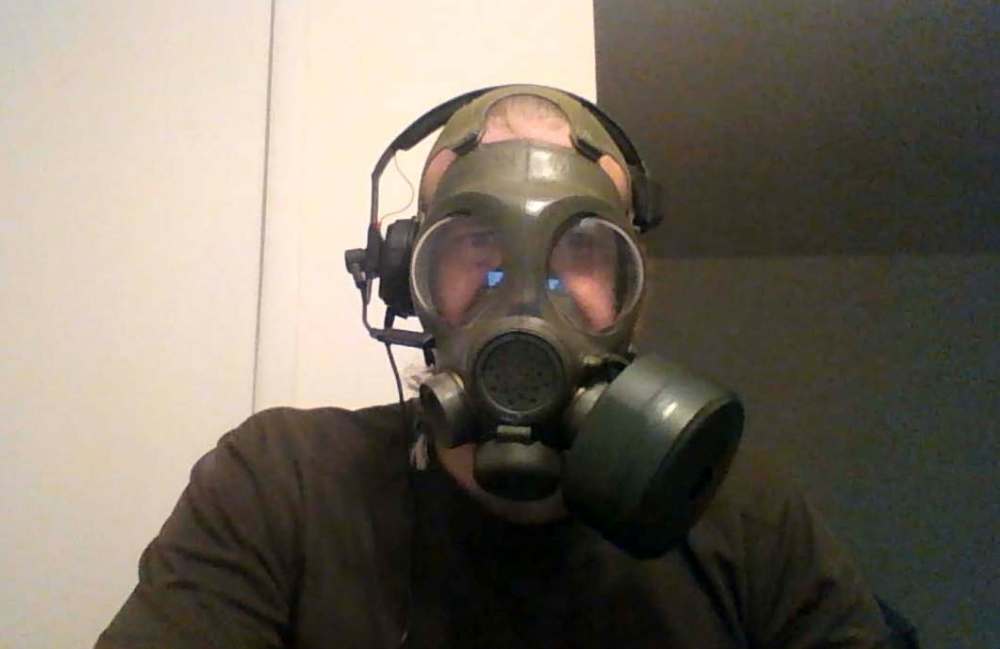
“This is the century upon which this current civilization’s rotting Jew-infested country comes to a collapse.”
Such depth of hatred is difficult to fathom. It calls to mind a passage from Eric Hoffer’s The True Believer, a 1951 study into the nature of mass movements and the people who give rise to them.
“Passionate hatred can give meaning and purpose to an empty life,” Hoffer wrote.
“Thus people haunted by the purposelessness of their lives try to find a new content not only by dedicating themselves to a holy cause but also by nursing a fanatical grievance.”
● ● ●
Unbeknownst to Patrik Mathews and Brian Lemley Jr., the former Canadian reservist’s movements had been tracked by the FBI since he abandoned his truck near Sprague, Man., and illegally crossed into the U.S. on foot in the fall of 2019.
The events that led to Mathews’ decision to flee the country have been extensively recorded in the pages of the Winnipeg Free Press, with his disappearance following an undercover investigation by this newspaper exposing him as a combat engineer in the 38 Canadian Brigade Group in Winnipeg.
Mathews’ decision to run was an attempt to escape the repercussions of being unmasked as a neo-Nazi. But what he walked into in the U.S. was much worse.
During a lengthy criminal investigation into members of The Base, the highest levels of U.S. federal law enforcement deployed some of the most sophisticated counter-terrorism techniques at their disposal, and an undercover FBI agent worked to infiltrate the neo-Nazi network.
Agents tapped into encrypted chatrooms and targeted the would-be terrorists with video surveillance. They recorded phone calls and reviewed cellular location data. Eventually, the FBI secured a “sneak and peek” warrant to search the apartment Mathews and Lemley were sharing in Delaware.
What the agents found was disturbing: several self-recorded propaganda videos in which Mathews urged white supremacists to pick up arms and carry out attacks to spark a race war.
“If you want the white race to survive, you’re going to have to do your f—king part… This is the age of war,” Mathews said.
“Derail some f—king trains, kill some people, and poison some water supplies.”
According to the U.S. Attorney’s Office in Maryland — which would later prosecute the criminal charges against the men — many of Mathews propaganda videos discussed killing people in furtherance of the neo-Nazi movement.
And while down in Georgia attending a paramilitary training camp — known in neo-Nazi circles as “hate camps” — Mathews said he regretted not setting explosives at his Beausejour home to murder the Mounties who raided it on Aug 19, 2019.
As the Virginia rally approached, Mathews and Lemley’s discussions increasingly turned towards the possibility of creating chaos and bloodshed in Richmond. They built an assault rifle from firearms parts they purchased online and repeatedly took it to a gun range to practise.
The two men also prepared supplies: packing “bug out bags,” getting their hands on body armour and stockpiling more than 1,600 rounds of ammunition.
“I need to claim my first victim,” Lemley told Mathews in advance of the rally.
“We can’t let Virginia go to waste. We just can’t… Virginia will be our day,” Mathews said.
On the night of Jan. 15, 2020, Mathews and Lemley were holed up in their apartment in Newark, Del., located on a sprawling complex surrounded by trees, featuring winding roads and a shared swimming pool. They discussed the possibility of going to prison for their neo-Nazi activities.
“There can be no trust among a group of murderers,” Lemley told Mathews, adding that the content of his cell phone alone could be enough to send him to prison.
“You realize they’re just going to call us terrorists?” Mathews said.
Hours later, on the morning of Jan. 16, the FBI and ATF raided the apartment. As the authorities closed in, Mathews and Lemley desperately tried to destroy their cell phones by smashing them and throwing them in the toilet.
The two men have been in custody ever since.
They never made it to Richmond.
“I was getting up to go to work, which is about five o’clock in the morning. I tried to come out the door. I saw a police officer standing beside the doorway there, and he just goes, “Back in,” and he’s waving me back inside,” said David Dobyns, 64, who’s lived at the complex since November 2016.
Standing under a hot Delaware sun on a sticky and humid morning, on his way back from taking out the trash, Dobyns stops in the road to look at the unit where Lemley and Mathews used to live, and says he never suspected there might be two neo-Nazis across the street from him.
Even after he stumbled into the raid, his mind jumped to more mundane possibilities.
“I thought maybe it was a drug raid… I didn’t know what was going on at the time until later on when I heard on the news,” Dobyns says.
“I’ve never been across from anything like that in my life.”
● ● ●
Jan. 20, 2020 wasn’t just Lobby Day in Virginia, it also happened to be Martin Luther King Jr. day, a federal holiday across the U.S. in honour of the late-Civil Rights leader, who was assassinated by a white supremacist in Memphis, Tn., in 1968.
On a day set aside to remembering the righteous work of a Baptist preacher who dedicated his life to — and lost it in — the cause of racial justice, Patrik Mathews and Brian Lemley Jr. were plotting a racist terror attack.
This month, Mathews and Lemley Jr. stood in a federal courtroom in Greenbelt, Md., and pleaded guilty to numerous felonies. Their sentencing hearings are scheduled for Oct. 28, and the two men are facing potential decades behind bars.
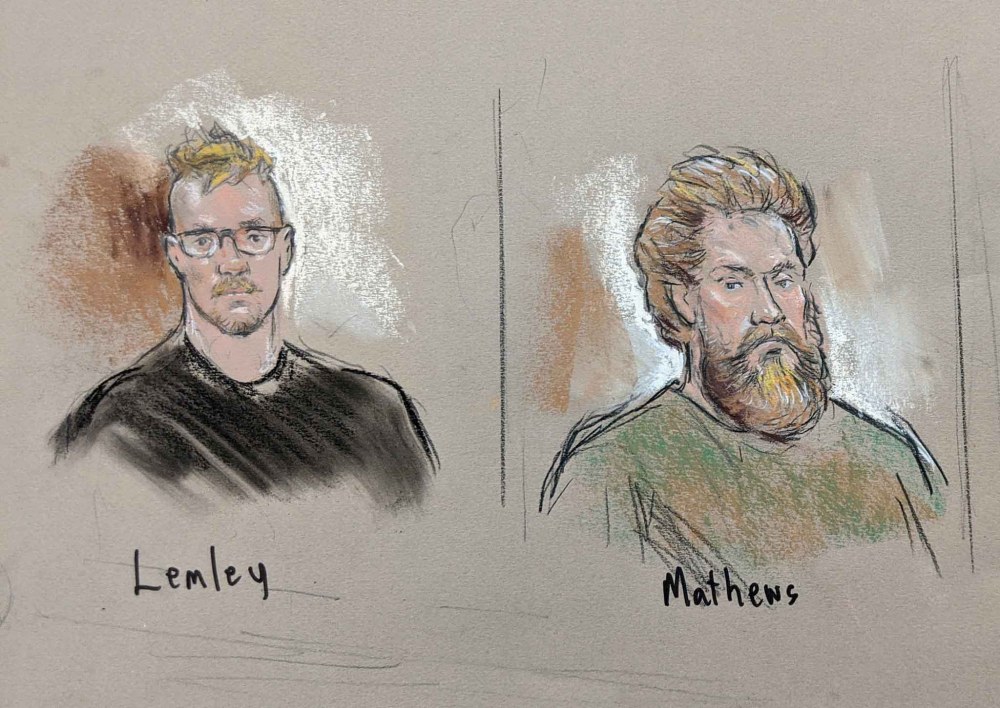
But they were far from the only members of The Base to go down in January 2020. During a two-day stretch that month, eight members were arrested in multiple states as part of a nationwide crackdown by the FBI and the ATF.
In Georgia, authorities say they uncovered the disturbing and meticulously planned murder plot of a married couple identified as anti-fascist activists; in New Jersey, a man was arrested for orchestrating a multi-state campaign — dubbed Operation Kristallnacht — to vandalize synagogues.
“The initial, personal cause of his grievance against the universe can only be guessed at; but at any rate the grievance is there,” George Orwell wrote of Adolf Hitler in March 1940, an observation that holds true for the men who impotently continue the Nazi tradition today.
“He is the martyr, the victim, Prometheus chained to the rock, the self-sacrificing hero who fights single-handed against impossible odds. If he were killing a mouse he would know how to make it seem like a dragon.”
On Jan. 6, 2021, a pro-Trump mob — composed of conspiracy theorists, white supremacists, and regular citizens caught up in the moment — stormed the U.S. Capitol in Washington, D.C., in an effort to stop the certification of the 2020 presidential election.
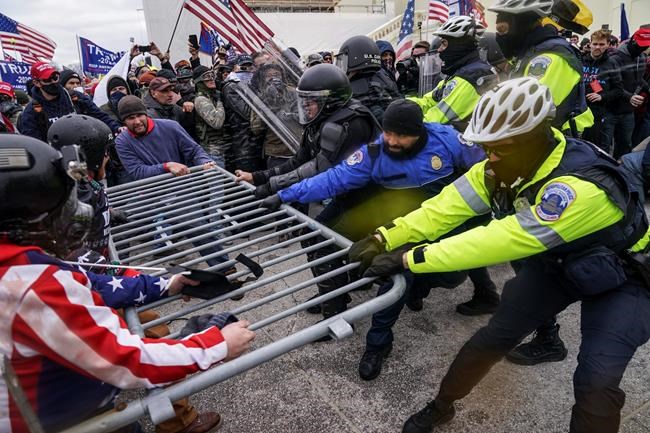
It was unlike anything seen before in the life of the American republic. It was the culmination of the four-year Trump presidency. It was the end result of a concerted campaign to fill peoples’ heads with lies about the validity of the election results.
Five people died either shortly before, during, or after the attack, with one of them shot dead by Capitol police. Hundreds of people have been arrested for their roles in the assault, which forced terrified lawmakers to flee through underground tunnels, and the charges have jammed up the court system.
To this day, the U.S. Capitol remains inaccessible to the public. Fencing and concrete barriers are erected around the grounds, with signs on the fence reading: “Area closed by order of the United States Capitol Police Board.”
One can’t help but wonder: What would have happened on Jan. 6 if members of The Base had not been behind bars? Would they have travelled to Washington, D.C., like they had planned to travel to Richmond, Va.? What would they have done?
And as much as Canadians — collectively — like to think of ourselves as more socially tolerant and progressive than our neighbours to the south, Mathews was born and raised in our backyard and trained by our military.
We’ve also had our own bursts of extremist violence in the not-so-distant past.
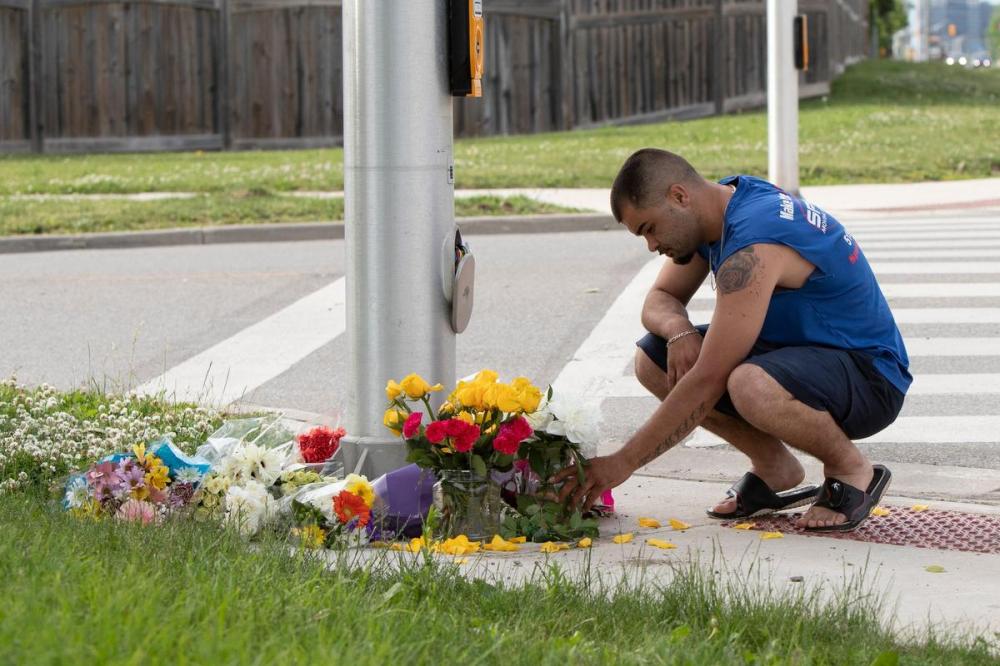
Just this month, a man rammed a pickup truck into a Muslim-Canadian family walking down the streets of London, Ont., killing four and leaving a little boy orphaned. Police allege the 20-year-old perpetrator, Nathaniel Veltman, targeted the family because of their race and religion.
It is far from the first racist terror attack on Canadian soil — it won’t be the last.
And like the Confederate monuments all over Virginia, the relics and ruins of residential schools in Canada — including the recent, grisly discovery of 215 Indigenous children buried in an unmarked grave in Kamloops — reveal our own history of state-led racial oppression and violence.
In Richmond — as in communities across Canada — there have been recent attempts to reckon with the fingerprints of institutionalized racism still lingering on public grounds.
Following the murder of George Floyd at the hands of Minneapolis police officer Derek Chauvin in the spring of 2020, protestors pulled down two statues on Monument Avenue in the capital of Virginia: one of them was the Jefferson Davis memorial, erected for the president of the rebel state.
As the American novelist James Baldwin wrote: “Not everything that is faced can be changed; but nothing can be changed until it is faced.” There is a lesson there Canadians would do well to heed.
In his speeches and sermons, MLK often paraphrased a line from preacher and abolitionist Theodore Parker, which went: “The arc of the moral universe is long, but it bends towards justice.”
Such high-minded ideals may prove little consolation to the oppressed during the time of their oppression. But every now and again — on better days — the world provides evidence to suggest King’s assertion may prove true.
At the very least, we should hope it is true.
There was a time in the United States of America when men such as Patrik Mathews and Brian Lemley Jr. — and countless other purveyors of racial hatred and violence — were backed up and protected by the force of law.
Today, their story ends with a courtroom and a prison sentence.
And at least for Mathews, it was a story that began two years earlier when recruitment posters for his cause started to pop up around Winnipeg.
ryan.thorpe@freepress.mb.ca
Twitter: @rk_thorpe
Accidentally left the caps lock on and typed something, but can’t be bothered to start again and retype it all?
Copyright ©2006-2021 Convert Case Ltd | Concept by Jason Gillyon | Privacy Policy | Terms of Use | Cookies Settings | Sitemap | About
Welcome to the Convert Case Text Generator Tool
A very handy online text tool where you can change between lower case and upper case letters, where you can capitalize, uncapitalize, convert to mix case and transform your text. Explore the options below:
Sentence Case
The sentence case converter will allow you to paste any text you’d like, and it will automatically transform it to a fully formed structured sentence.
It works by capitalizing the very first letter in each sentence, and will then go on to transform the rest of the text into lowercase as well as converting i’s into I’s. Every letter after a full stop will get converted into an upper case letter.
Note: it won’t, however, capitalize names or places.
This is an example of sentence case.
Lower Case
If you are wondering how to uncapitalize text, this is exactly what the lower case text converter will allow you to do – it transforms all the letters in your text into lowercase letters. Simply copy the text that you need generating into lower case and paste the text into the box above and select the ‘lower case’ tab.
this is an example of lower case.
Upper Case
The upper case transformer will take any text that you have and will generate all the letters into upper case ones. It will essentially make all lower case letters into CAPITALS (as well as keep upper case letters as upper case letters).
To do this, you simply have to select the text that you need changing and pasting into the box above and then select the UPPER CASE tab.
THIS IS AN EXAMPLE OF UPPER CASE.
Capitalized Case
The capitalized case converter will automatically convert the starting letter of every word into an upper case and will leave the remaining letters as lower case ones.
Simply copy the content that you will like to generate into this format, then paste into the box form above and select the Capitalized Case tab.
This Is An Example Of Capitalized Case.
Alternating Case
The alternating case converter will allow you to transform your text (no matter the current format) into text that alternates between lower case and upper case. It will generate a capital letter and then a lower case letter within the same word.
tHiS Is aN ExAmPlE Of aLtErNaTiNg cAsE.
Title Case
The title case converter is perfect for those who are a bit unsure on how to title an upcoming essay. It essentially ensures the correct letters are capitalized within the context of a title. Words such as “an” will be left all in lower case and words that are important will be converted such as “Title”.
This Is an Example of Title Case.
Check out our other text tools as well such as our small text generator and wide text generator.
Registered in England and Wales. Company number: 11614495.
Registered office address: C4DI @TheDock, 31-38 Queen Street, Hull, England, HU1 1UU

Ryan Thorpe likes the pace of daily news, the feeling of a broadsheet in his hands and the stress of never-ending deadlines hanging over his head.
Our newsroom depends on a growing audience of readers to power our journalism. If you are not a paid reader, please consider becoming a subscriber.
Our newsroom depends on its audience of readers to power our journalism. Thank you for your support.
History
Updated on Saturday, June 19, 2021 10:05 AM CDT: Corrects typo.



































